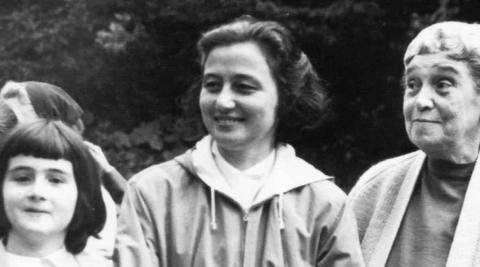
Photo by Sevak Aramyan | Dreamstime.com
I lived in Mariapolis Luminosa, the Focolare’s “little city” in Hyde Park, New York for two and a half years. In that environment, where everyone tried to put the Gospel into practice, I was able to learn, experience and understand Focolare founder Chiara Lubich’s words, “One city is not enough.”
I didn’t want to leave, but as the time came close I was told: “The little city is a school of life. You come, you learn and then you go back to your own town and put what you learned into practice.”
Upon returning home, I immediately encountered many sufferings. A young man committed suicide. I was confronted with gang violence, shootings and a huge disconnect between parents and their children, community residents and law enforcement.
After life in the little city, this was a nightmare. I was working as the community liaison at the school, but immersed in the difficulties of my community. My human instinct was to go back to my safe place, Mariapolis Luminosa. However, I remembered that I’d been there to learn and now I had to implement what I had learned in my hometown.
Focusing on “One city is not enough,”
I began trying, little by little, to understand what had happened in the two years I was gone.
I began to see that many people lived in fear of retaliation. Parents came home exhausted from working in the fields and didn’t have time for their children. Law enforcement did not always want to help, because they were too afraid or because a few of them even benefited from drug trafficking.
I tried to face the challenge. When hearing gang fighting at 2am, I’d call the police. In the beginning, they didn’t come. I found out they avoided coming to certain neighborhoods and taking reports from residents on the street, as they feared being shot at.
I tried to love the police as they needed to be loved. When I, or my neighbors, had to call and make a report, I would let the police know they didn’t have to take the report in the street, but were welcome to come to my home and get a report from a safe place.
Understanding and acknowledging the fears of local law enforcement and offering a solution was the beginning of a long-lasting collaboration. Little by little, the officers began to feel supported by our community, as well as the community by law enforcement. I began to educate my neighbors and the residents of our town about this process.
After making a report to law enforcement,
I and the people who helped me to improve the situation had to follow-up with the cases, go to court, get restraining orders (if needed) and so on. The police understood that we wanted to create change in our community.
And seeing the consequences, many of the youth who were in gangs understood that crime and violence was no longer to be tolerated.
I began working with parents, letting them know that loving their children didn’t mean giving them everything they wanted. Loving their children meant spending time with them, as well as setting boundaries.
With time, work, dedication and love, we as a community began to experience a change. There were no more gang fights at 2am, and fewer shootings. We began to experience more collaboration from law enforcement and local schools.
Now, after some years, the sheriff and I, together with some other members of our community, continue to work together on preventive measures. This allows us to provide more educational and fun events for the community.
The challenges are always there, but we understood that only by working together could we transform our town. The vision of “One city is not enough” keeps me moving forward in the journey of bringing heaven to earth.












